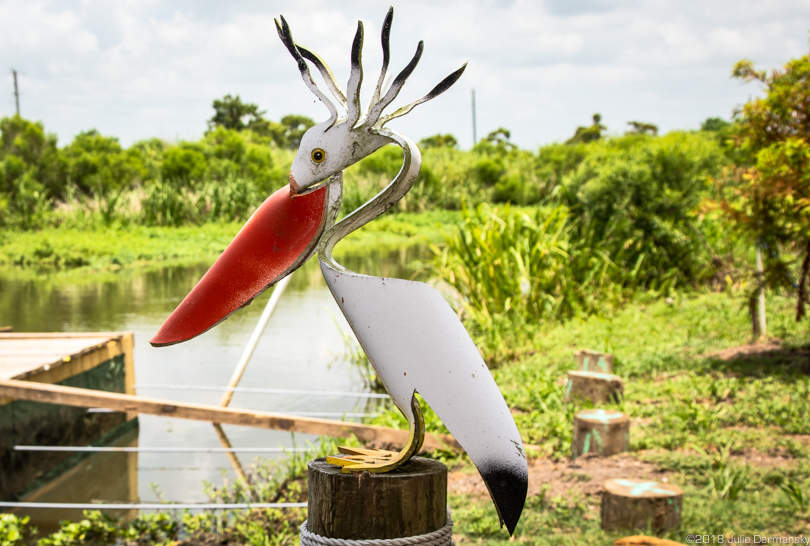
Manchac, Louisiana, is located on a narrow strip of land between two brackish lakes, surrounded by cypress trees and abundant wildlife. About 43 miles northwest of New Orleans, Manchac’s picturesque wetlands — like the rest of Louisiana’s coast — are endangered, with their latest threat, according to some, coming from a resort-style development marketed as “ecotourism” and local economic savior.
What could be wrong with building a hotel and housing development for 2,000 people in environmentally sensitive wetlands, which by their very nature, are located in a flood zone?
“Everything,” Kim Coates, founder of “Save Our Manchac,” a concerned citizens group, told me recently. She was giving me a tour of the area where developers want to build the $90 million residential project on land controlled by Port Manchac.
Terry Jones, a principal investor and spokesperson for the proposed development, The Village at Port Manchac, refers to the project as a “nature-based community.” His description of it includes around 100 single-family homes with boat slips, between 400 and 500 cabins, condominiums and apartments, and a hotel on the land controlled by the Port. There will also be a boardwalk lined with restaurants and a sandy cove for swimming, according to a model of the development released by the developers.
Nature (and Human) Based Risk
But critics point out a range of reasons situating a large residential development at Port Manchac is not the best, or safest, idea, including burdens on community resources and threats from natural disasters. Only one road would lead in and out of the development. That road, like the one to the Port itself, could easily be closed off due to an accident at the port, a derailed train, or local flooding, which has happened more than once in the past decade.
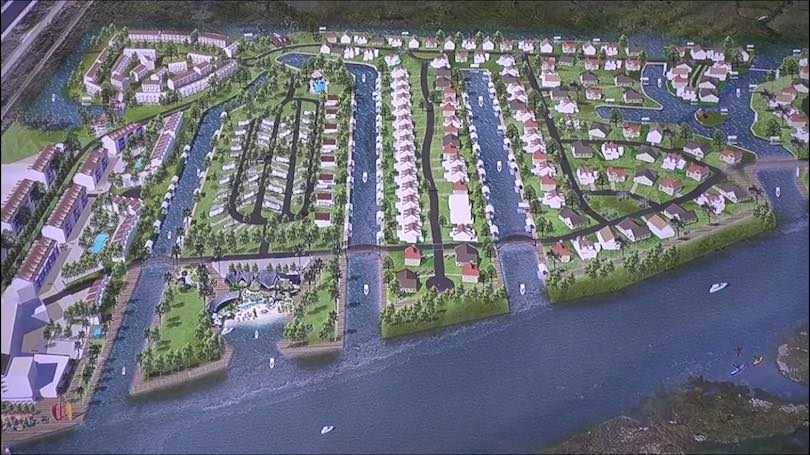
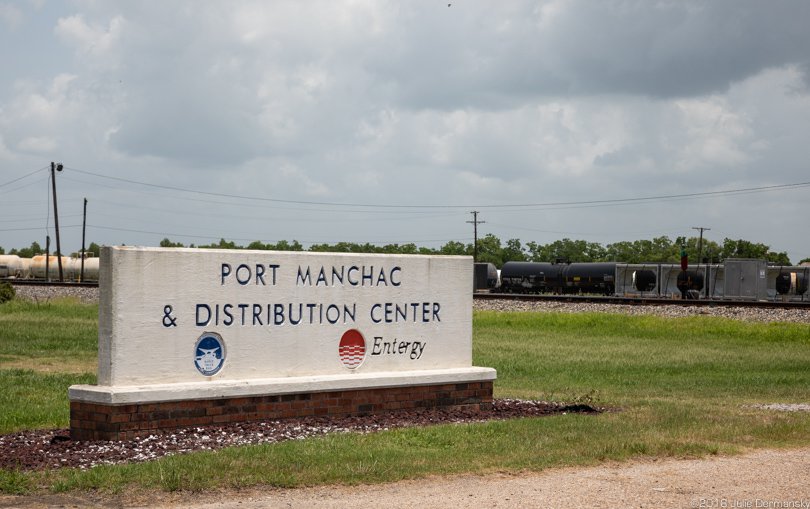
If the road leading to the development is closed off, potentially thousands of people who buy into the project would need to be evacuated by boat or helicopter. Both are dangerous options during storms and other extreme weather events, which are predicted to increase in Louisiana due to climate change.
Though many politicians in Louisiana, including Gov. John Bel Edwards, say they are unsure how much human activities are responsible for climate change, climate scientists are much more certain. For example, the American Meteorological Society’s 2016 “State of the Climate” report, released last year, offers the first examples of extreme weather events not possible in a preindustrial climate.
“If we agree to this, we are agreeing to putting people in harm’s way, both newcomers that would buy in, and our first responders,” Coates said. She brought me to the site of the proposed development, so I could get an idea of how hard it would be to evacuate 2,000 people if the only road in to the development became impassible. To evacuate would require an approximately 14 mile boat ride along winding bayous behind the port to reach the main road.
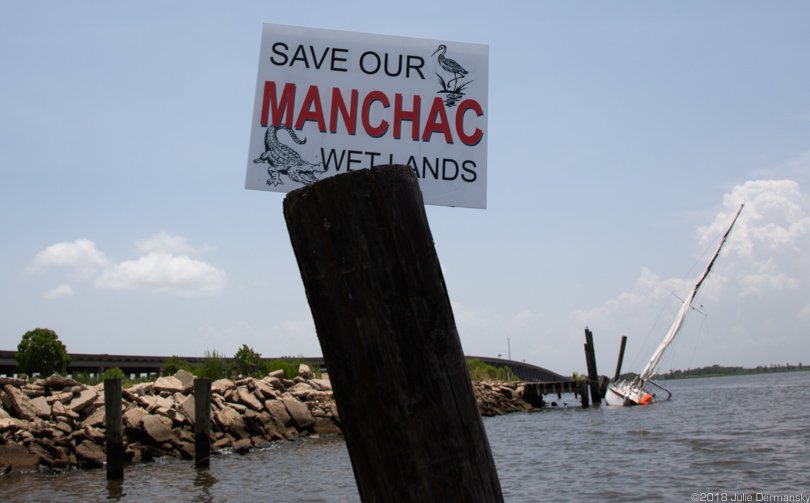
Coates took me on that trip. Tied down near the boat launch was a sailboat damaged by strong winds passing through just a few days before. “This is a beautiful area,” Coates said, “but it is inhospitable. There are alligators, water moccasins, and mosquitoes.” Furthermore, the area is prone to tidal surges and high winds and is in a designated flood zone.
Manchac, a small unincorporated community in Tangipahoa Parish, has approximately 100 full-time residents. Most of the buildings in the swamp are fishing camps. Though they may look like houses, they are actually seasonal “fishing camps,” a term common in Louisiana’s wetlands. It is rare anyone would stay in one of the fishing camps during a storm, due to the dual threats of flooding and storm surge.

“This is greenwashing at its worst,” Coates said. “They can’t brainwash us to think it is a green project just because they are throwing the word ‘ecotourism’ around.”
Coates is not alone in her criticism of the planned development. About 100 people, including locals and representatives from environmental groups, turned out for a June 26 meeting to discuss the proposed development project at Port Manchac. Many were already members of the Save Our Manchac coalition, which Coates started when the area was threatened by a proposed battery component manufacturing plant earlier this year.
The group was able to sway the Port to terminate a lease agreement made with Syrah Technologies, an Australian company that planned to refine graphite into a component for lithium ion batteries.
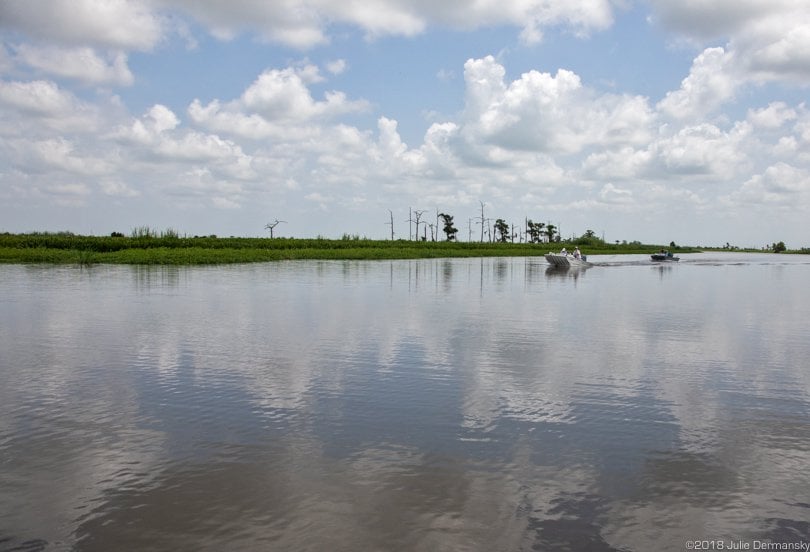
Community Voices
At the June meeting, speakers touched on issues they said match the so-called “7 sins of greenwashing” described by TerraChoice Environmental Marketing Inc. They include the sin of hidden trade-off, sin of no proof, sin of vagueness, sin of irrelevance, sin of lesser of two evils, sin of fibbing, and sin of worshipping false labels.
Ed Bodker, an environmental activist and retired Louisiana Department of Transportation and Development program manager, warned the development would destroy at least 100 acres of wetlands, further degrading the coastline along the two lakes on either side of Manchac, Lake Maurepas and Lake Pontchartrain. “To build a new community in a storm surge area, it just doesn’t make any sense,” Bodker said. “It puts people and wetlands in jeopardy.”
Bodker also brought up how this project could threaten coastal restoration efforts already underway in the area. He thinks it is ill-advised for the Port to consider any project that would interfere with current endeavors to restore them.
Many at the meeting expressed frustration that the Port is considering a project that would inevitably lead to more coastal erosion when Louisiana has estimated it already needs $50 billion to fund the state’s coastal restoration master plan.
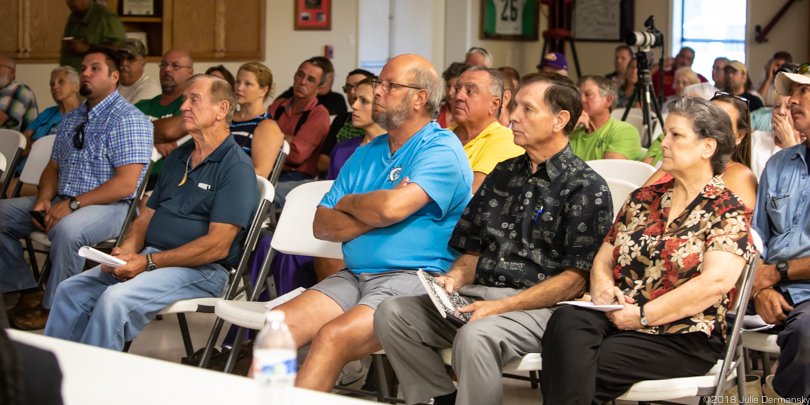
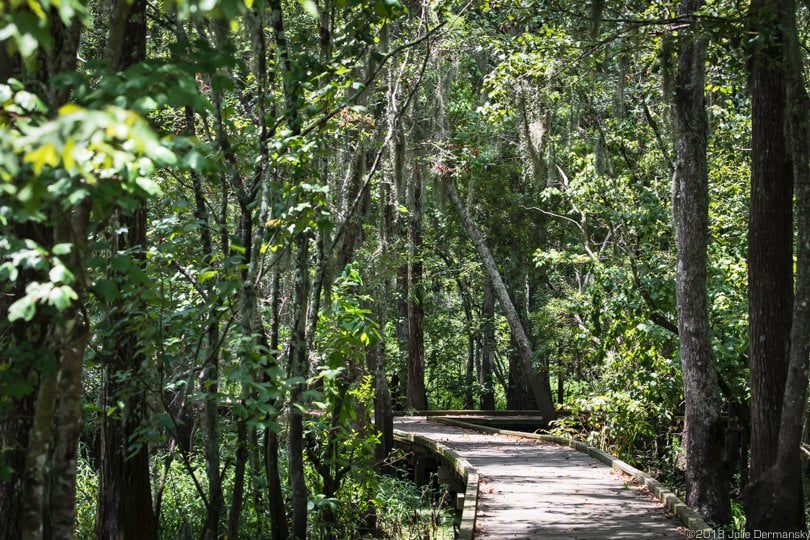
Manchac is next to two protected wildlife management areas and is already a tourist destination. The location is popular for fishing and boating, making it a good place for potential ecotourism opportunities, but ones with a lighter, less permanent footprint on the already impermanent land. Even if The Village at Port Manchac development is never built, coastal erosion will remain a concern. Under a worst-case scenario model from the state, without restoration, the land slated for development could be underwater within 50 years.
Virgil Allen, a former Tangipahoa Parish Schools superintendent, said the school system can’t handle the large number of new students a large residential development like that would bring to the already crowded local schools.
And John Hoover, a crab fisherman, explained how nutrient runoff from the housing project could further disrupt the area crabbing industry.
George Coxen, Port Manchac’s fire chief, said his volunteer department isn’t prepared to protect a development like the one proposed. He said the developers asked him what he would need, but he can’t say exactly until he knows more about the plans. However, to start with, Coxen says he would need a new fire station to house a ladder truck. A new ladder truck alone will cost at least $1.2 million.
An Uncertain Future
Retired Lt. Gen. Russel Honoré, founder of the Green Army, a coalition of environmental groups and concerned citizens fighting against pollution, came to support Save Our Manchac. “You don’t have an organized planning and zoning board,” Honoré said, calling it a “big scam” plaguing many of Louisiana’s rural communities. When it comes to building in flood zones, he agrees with Bodker. “Building developments in flood zones makes no sense,” Honoré said.
Margie Vicknair-Pray, spokesperson for the Delta Chapter of the Sierra Club, concurred.
“We live in a state where the developers set the rules — if there are no regulations, they do things the cheapest way they can,” she said during the meeting. Both she and Honoré encouraged everyone to remain politically active. “Politicians hear from lobbyists daily. How often do they hear from you?”
“We are so used to the abundance of seafood and being able to go out your back door, basically, and then throw a line out and catch something to eat,” Pray said at the meeting. But, “we are getting to the point where we are not going to be able to catch the seafood we are used to.”
Still, efforts by Save Our Manchac could already be affecting the trajectory of this proposed project.
Manchac’s Port Commissioners have a July 10 vote scheduled on whether to give the developers 18 months to develop feasibility studies, but that vote may be called off. Save Our Manchac found documents that question the Port Commission’s authority to permit a residential development in the area. The commission is currently reviewing the matter and may delay the vote or cancel it entirely.

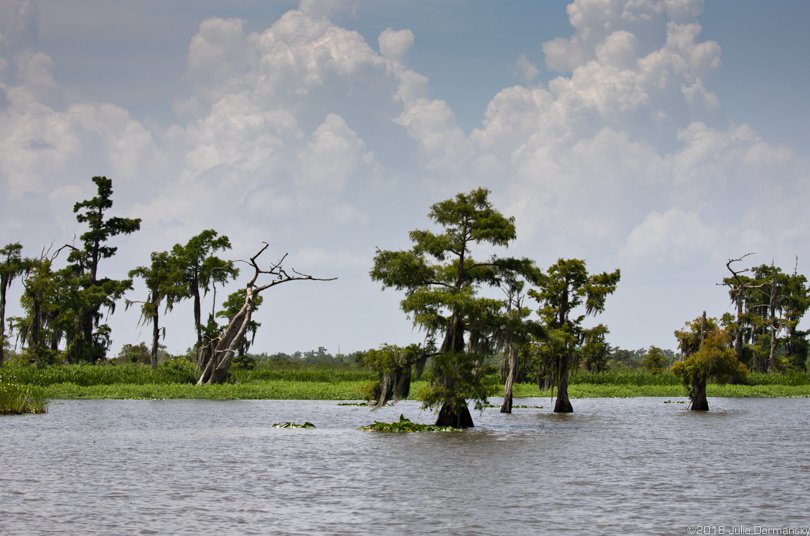
Matching Opportunity Extended: Please support Truthout today!
Our end-of-year fundraiser is over, but our donation matching opportunity has been extended! Today, all donations to Truthout will be matched dollar for dollar. Your one-time gift today will be matched immediately. As well, your monthly donation will be matched for the whole first year, doubling your impact.
This matching gift comes at a critical time. Trump has made it no secret that he is planning a demolition-style attack on both specific communities and democracy as a whole, beginning on his first day in office.
Help us prepare for Trump’s Day One, and have your donation matched today!